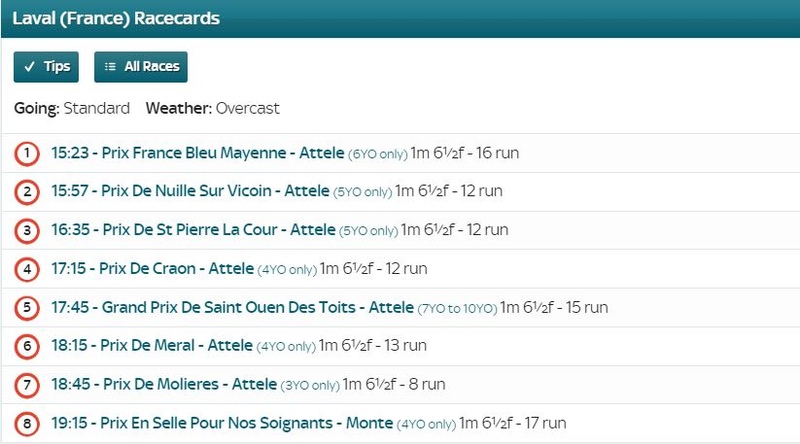
One of the real joys of horse racing for punters is also its biggest challenge; there is a huge amount of information to pick through and digest before placing a bet. Many punters want to maximise the hard work they put into reading the form for a particular race by getting involved in more than one betting market, and there are plenty to choose from.
Winning distances betting allows savvy punters the chance to use their knowledge and hard work to gain from more than just one race. These markets – which can take the form of spread betting markets or more traditional markets – operate across multiple races, usually the whole card of races at a given day’s meeting.
In our guide to winning distances betting, we detail exactly how these markets work, where you will find them and – most importantly – how to benefit from them.
How Winning Distances Betting Works

When horse racing fans look at the result of a particular race they are looking for more than just the finishing positions of the horses competing. Every racing enthusiast is interested, for example, in the distance by which the first placed horse won.
Some elements of a racing result are a little tough to understand. Thankfully, that’s not the case with the winning distance. Horse races are measured in miles and furlongs, but the winning distances are much shorter so they are measured in lengths (one length equals eight feet). The higher the number of lengths a horse won by, the better the performance.
It gets a little more complicated when the winning distance is less than a length where the measurements are – in descending order – three quarters of a length (¾l), half a length (½l), a neck (nk), a quarter of a length (¼l), a head (hd), a short-head (shd) and a nose (nse). You will also see fractions of a length used for longer winning distances, for example, 9½ lengths.
Winning distances betting works by allowing punters the opportunity to predict the aggregate winning distances of races at a particular race meeting on a given date. Working out the combined winning distances is a fairly simple process but be sure to have a look at the specific rules of the bookmaker you are betting with. Different bookies use different values for distances such as a nose or a neck and have their own maximum winning distances (these maximums vary between flat racing and jumps racing).
Different Types of Winning Distances Betting Markets

In the simplest version of a winning distances betting market, punters are given a binary option. The bookies set their line (the total combined winning distances they roughly expect for the given meeting) and punters either bet on the total coming in under or over it. Generally speaking, the odds for these bets will be somewhere just under evens but prices can change so it’s worth shopping around and seeking out the best value.
The other options for winning distances betting comes via the spread betting firms. Again, the basis of the market is a line set by the bookies, although this usually takes the form of a range rather than a specific number. Punters then have the choice to either buy or sell the line, winning money if their call is correct and losing if it is wrong.
The risks are greater with spread betting than a traditional bet but then the rewards are potentially greater too. Let’s take an example to illustrate how the spreads work in relation to winning distances.
Imagine the first day of the Cheltenham Festival. A spread betting firm sets the line for total winning distances at 80-85 lengths and Punter X believes the total will be lower than that so they place a £10 bet on that outcome. If the aggregate winning distances come out as 70 lengths, Punter X will win £100 net win (10 lengths below the spread x £10). However, if it went the other way, for every length above 85, Punter X would have to pay the bookie £10 so you can see how the risks and rewards quickly add up.
How to Secure a Net Win from Winning Distances Betting

As with any type of betting, the route to getting an overall net win from winning distances betting is seeking out the betting value with the bookies. That is, a selection which has a better chance of winning than the odds (and their implied probability) suggest.
When it comes to winning distances betting there are a few things to look out for on your route to potential gains. The first is vulnerable short priced favourites. You will often find that a short odds favourite finds the going much tougher than many suggest. If there are a couple of favourites who you believe will struggle to win let alone win by a big distance on a card, it may well be worth trying to bet under the line (or selling on the spreads).
It is also worth paying attention to what time of the season it is. Even the very best horses often need to get a run or sometimes two under their belts before reaching their top level. This could be apparent for some races at an early season meeting, in which case this could be another time to think about selling the winning distances.
Finally, be sure to consider the competitiveness of the meeting that you’re betting on. The trends for the Cheltenham Festival, for example, show that the racing is getting more competitive and so the total winning distances are getting shorter. It is a similar situation at Royal Ascot where the gradual increase in prize money continues to attract the best horses on the flat from around the world so wins by big margins are often less common at such meetings than they once might have been.
